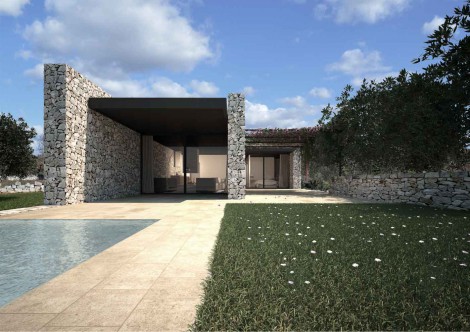Beta House
In terms of architecture, “contemporary” and “modern” aren’t synonyms. “Modern” refers to the modernist architecture of the early and mid-20th century, an era of great change in the American landscape. Ornamentation and sentimentality were out; clean lines and superior function were in. But over time, many architects came to feel modern houses were cold and unfriendly. Postmodernism and deconstructivism came along to tweak the modern ideal, leaving us with the contemporary state of affairs.
Contemporary architecture retains modernism’s devotion to connecting the indoors and outdoors, and to achieving a feeling of spaciousness. But it isn’t averse to showing signs of regional character or even whimsy. And today’s architects are especially concerned with energy efficiency and sustainable materials, which has led to some truly innovative design.
Key Elements are natural, sustainable components. Contemporary architects recognize the human need for contact with nature, right down to what our homes are made of. Hence the popularity of wooden floors, natural stone countertops and even “living” roofs made of green plants.
Recycled and nontoxic materials. Countertops, roofing and flooring made of composite materials are hot, as are low-emission paints and carpeting.
Natural light. Today’s houses often feature ample skylights and large windows to let the sun shine in.
Contemporary homes really have little downside, especially in terms of creature comforts. But it’s wise to pay attention to energy consumption. Although today’s homes are built tightly and leak little energy to the outside, they can still be power gluttons.
Kitchens are one area where the latest amenities can sucker-punch a utility bill. Extra dishwashers, outdoor refrigerators and oversized stoves are quite trendy, but they can be a drain on the power grid. Large windows can also hurt rather than help, especially if they’re poorly insulated or aren’t made of UV-blocking glass. Contemporary homes place a huge emphasis on entertaining, particularly outdoors. The most expensive homes on the market frequently feature outdoor amenities as lavish as those inside: alfresco kitchens complete with refrigerators and warming drawers are common, as well as outdoor rooms centered around freestanding fireplaces. These homes are perfect for casual entertaining, but formal dining rooms for dinner parties are also making a comeback.
Today’s architects also recognize that the outdoors isn’t just for barbecues. Many contemporary homes seek a communion with nature, not just in forms that echo the natural environment, but in the type of materials used. Green, or eco-friendly, building is an enormous trend, using materials and methods that create a sense of harmony and relaxation.









